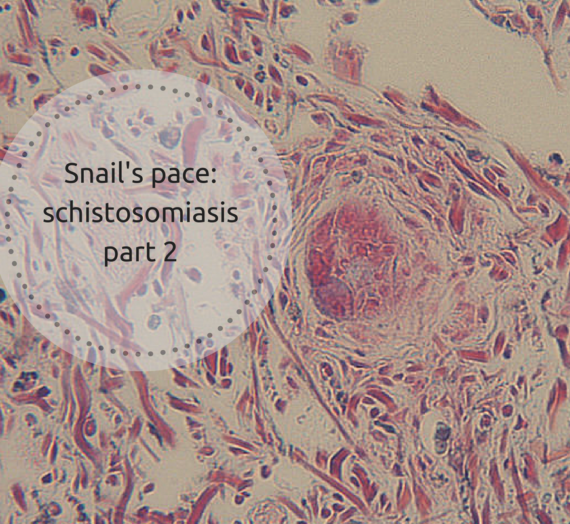To understand what mechanisms allow species to evolve and diverge from one another is a primary goal of evolutionary biology. Speciation is an evolutionary process defined as the process by which a single species splits to form one or more other distinct species. A species is therefore loosely defined as a population of biological organisms which are capable of interbreeding and producing fertile offspring. The mechanisms of speciation occurring can be caused by geographical means – such as allopatric, peripatric, sympatric and parapatric speciation. However, natural and sexual selection also play a role in the formation of new species.
The most common form of speciation occurs via allopatry. This is when a single population is split into two or more due to a geographic boundary (see figure 1). This may include islands breaking off from a mainland; rivers forming in between areas or any geographical boundary which prevents gene flow between populations. An example of this is the Amazonian forest birds, which have split from a common ancestor which moved to isolated areas during arid periods. The physical separation of the individuals from a population for numbers of generations leads to a gradual change in alleles and genes. This is a result of random genetic drift in the background of natural and sexual selection, as well as the gradual accumulation of mutations. This creates incompatibilities and the inability to interbreed if the separate populations come into secondary contact.

Similar to allopatric speciation is peripatry. This is where a small population of new species is formed from the edge of large populations, creating isolation due to physical barriers. Peripatric speciation is similar to populations that have undergone a bottleneck effect – where population size has drastically declined, for example, due to hunting, or disease. This leads to speciation as smaller population sizes results in limited gene pools, thus allowing fluctuating genetic drift to fixate alleles quickly. This results in reduced genetic diversity.
An example of peripatry is seen in the speciation of spiny-throated reed frogs (Hyperolius spinigularis) in Africa. Three populations that were broadly isolated from their sister species formed new species of H. tanneri, H. davenporti and H. ukwiva8. This shows that geographical limitations cause speciation since prolonged periods of physical isolation between populations can lead to divergence over a short number of generations.
So as we can see, speciation may occur through many different modes, and the rarest of all of these is sympatric speciation: divergence of species that are occupying the same geographical area. This can be due to different microhabitats occurring within areas, such as certain individuals of a species preferring trees, ground level or varying deepness of water habitats. However, different sub-environments are not necessary for sympatric speciation – different niches within the same habitat can also lead to speciation.
An example of this is the hawthorn fly (Bibio marci), where different populations found in the same area feed on different fruits. Hawthorn flies usually feed on drupes (fleshy fruits), however some feed on non-native species of apples within Mexico. It has been found that the populations which feed on apples mature faster, and interestingly, there is only a 4-6% rate of hybrids forming between the two populations. This indicates there is little to no interbreeding occurring and suggests speciation is taking place, despite the populations occupying the same space.

A similar form of sympatric speciation is parapatry. This type of divergence occurs within areas where there are partial separations, although the habitats are still connected through interbreeding zones. Parapatry is also observed within ring species – a term used to identify sets of neighbouring populations which are able to interbreed with individuals in populations directly next to them, known as hybrid zones. However, they are unable to breed successfully with populations further along or at the end of the “ring”. An example of a ring species is the population of salamander which forms a ring around the Great Central Valley in California. Though the neighbouring populations of salamanders are able to interbreed, the klauberi and eschscholtzii subspecies are unable to hybridise. This is due to both populations being on the “beginning” and “end” of the ring. Hence, speciation is not only likely to occur in isolated communities but can occur in populations which live within the same habitat.
It’s worth remembering that all of the above mechanisms of speciation occur under different selective pressures. Both sexual and natural selection play a part in speciation, along with the accumulation of random mutations, leading to incompatibilities between diverging populations. In both examples of allopatric and sympatric speciation, different selective pressures drive the formation of new species. Naturally, certain individuals in populations may have directly advantageous or favourable characteristics which increase their likelihood of survival – such as body size in stickleback. Larger body sizes are adapted to long migrations, which has been continuously selected for and led to a rapid evolutionary change. These physiological changes, along with sexual selection can also result in speciation through the continuous choice of mating with individuals which have certain traits that do not necessarily equal to adaptive abilities.
Sexual selection is thought to be a major key in understanding the explosive rates of speciation seen in cichlid fish. There are believed to be approximately 1650 species of cichlids that inhabit the Rift Valley Lakes of Africa. Female mate choice is, at least partially, based on male colouration, with females preferring males with colours indicative of their own “region” of the water, hence that particular colour and pattern gets passes on and is continuously selected for. Whilst differential niche exploitation also plays a role in cichlid speciation, it is clear that sexual selection is an important factor that has allowed these fish to diversify to the great extents we see today.

Speciation can occur in a number of varying ways as discussed above – including allopatric and sympatric speciation, along with their own different sub-processes. These mechanisms however are not as important as the selective pressures in which said conditions put them under. Natural and sexual selection play a vital role in driving speciation forward and it is important to understand how these processes work. Over many generations, all of the above factors and mechanisms are put into play, thus creating the immense biodiversity of the world in which we have today and it is vital that we understand how these processes come into action in order to monitor how we affect and benefit the ever-changing habitats and biodiversity that the earth has to offer.
References:
- Figure 1: D. Krempels, “Evolution and Biology” (2006)
https://en.wikipedia.org/wiki/Sympatric_speciation#/media/File:Speciation_modes.svg
Accessed: 08/12/2016 - Dobzhansky, “The Genetics of Species: Differentiation and Speciation” Genetics of the evolutionary process (1970), (139) pp. 339-49
- Bertel, K. Hülber, B. Frajman, “No evidence of intrinsic reproductive isolation between two reciprocally non-monophyletic, ecologically differentiated mountain plants at an early stage of speciation” Evolutionary Ecology (2016), (30) pp. 1031-42
- Mayr, Systematics and the Origin of Species from the Viewpoint of a Zoologist (1942), pp.102-23
- J. Near, M. F. Benard, “Rapid allopatric speciation in logperch darters (Percidae: Percina)” Evolution (2004) pp. 2798-808
- Haffer, “Speciation is Amazonian Forest Birds” Science (1969), (165) pp.131-6
- Lambert, C. H. Ma, “The Coalescent In Peripatric Metapopulations” Journal Of Applied Probability (2015), (52) pp. 538-57
- Nei, T. Maruyama, R. Chakraborty “The bottleneck effect and genetic variability in populations.” Evolution (1975), (21) pp. 1-10
- P. Lawson, J. M. Bates, M. Menegon, S. P. Loader, “Divergence at the edges: peripatric isolation in the montane spiny throated reed frog complex” BMC Evolutionary Biology (2015), pp.15-128
- Lande, “Genetic Variation and Phenotypic Evolution During Allopatric Speciation” The American Naturalist (1980), (116) pp. 463-79
- M. Fitzpatrick, J. A. Fordyce, S. Gavrilets, “What, if anything, is sympatric speciation?” Journal of evolutionary biology (2008), (21) pp. 1452-9
- Mebert, et al. “The dynamics of coexistence: habitat sharing versus segregation patterns among three sympatric montane vipers.” Biological Journal of the Linnean Society (2015), (116) pp. 364-76
- M. Smith, “Sympatric Speciation” The American Naturalist (1966), (100) pp. 637–50
- H. Berlocher, G. L. Bush, “An electrophoretic analysis of Rhagoletis (Diptera: Tephritidae) phylogeny” Systematic Zoology (1982), (2) pp. 136–55
- P. Huang, “Parapatric genetic introgression and phenotypic assimilation: testing conditions for introgression between Hercules beetles (Dynastes, Dynastinae)” Molecular Ecology (2016), (25) pp. 5513-26
- Monahan, R. Pereira, D. Wake, “Ring distributions leading to species formation: a global topographic analysis of geographic barriers associated with ring species” BMC Biology (2012), (10) pp. 1-22
- B. Wake, K. P. Yanev, “Geographic variation in allozymes in a “ring species”, the plethodontid salamander Ensatina eschscholtzii of North America” Evolution (1986), (40) pp. 702-15
- Schluter, “Ecology and the origin of species” Trends in ecology & evolution (2001), (16) pp. 372-80
- M. Panhuis, R. Butlin, M. Zuk, “Sexual selection and speciation” Trends in Ecology & Evolution (2001), (16) pp. 364–71





Blog update – In The Mind Library
[…] Speciation: the road to evolution […]